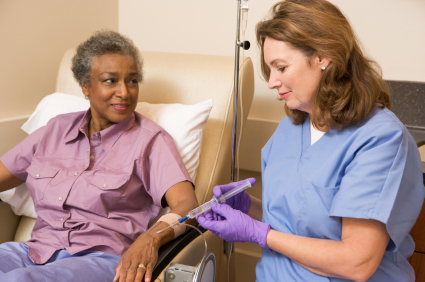New Findings On IV Ketamine For Treatment-Resistant Depression
We’ve written before about the rapid-onset antidepressant effects of ketamine, an anesthetic that is used in human and veterinary medicine. At lower doses, intravenous (IV) ketamine can induce antidepressant effects in both unipolar and bipolar depressed patients. When doses of 0.5mg/kg are infused over a period of 40 minutes, antidepressant effects appear within two hours but are short-lived, typically lasting only three to five days. Results have been consistent across studies at Yale University, the Icahn School of Medicine at Mount Sinai, and the National Institute of Mental Health. So far, clinical use has been limited by the short duration of the effects and the required presence of an anesthesiologist, which can be prohibitively expensive for many patients.
In a cover story in the January 2013 issue of Psychiatric Times, Arline Kaplan reviewed new findings about ketamine. The drug is a high-affinity, noncompetitive NMDA-glutamate receptor antagonist. It is not yet FDA-approved for use in depression.
According to a recent article by Murrough and Charney, response rates to ketamine are around 54% and the drug “appears to be effective at reducing the range of depressive symptoms, including sadness, anhedonia [the loss of ability to experience pleasure], low energy, impaired concentration, negative cognitions, and suicidal ideation.”
David Feifel, Director of the Neuropsychiatry and Behavioral Medicine Program at the University of California at San Diego (UCSD), instituted a program there in which patients can receive treatment with ketamine for clinical purposes (rather than for research) after signing detailed informed consent forms and being warned that the treatment is not yet approved for depression and that its effects may be temporary. The UCSD Medical Center’s Pharmacy and Therapeutics Committee, with the support of the anesthesiology department, agreed that nurses may administer the ketamine in an outpatient setting, making the procedure more affordable.
There is still the question of how to make ketamine’s effects last.
In a study of 24 patients with treatment-resistant depression by Murrough et al., six IV infusions of ketamine administered over 12 days led to relapses of depression after an average of 18 days following the last infusion among the 70% of patients who responded.
Feifel decided to try a different approach, giving maintenance infusions every two weeks to patients whose response to a first IV ketamine infusion lasted a week or more, and is apparently having some success.
There are other ways of administering ketamine, including oral, nasal, and intramuscular methods, and Feifel thinks that among these, only the intramuscular method shows promise. He has shifted some IV ketamine patients to intramuscular administration, which is even more practical and cost-effective.
Another UCSD clinician, Scott Irwin, is evaluating ketamine’s effectiveness when taken orally by clinically depressed patients at San Diego Hospice and the Institute for Palliative Medicine. Irwin says that psychomotor stimulants are the first-line treatment for the approximately 15% of patients in hospice care who are depressed. However, for those patients with significant anxiety, oral ketamine is prescribed instead. Irwin has seen about a 70% response rate in depression and a 100% response rate in anxiety. The ketamine is administered once per day, usually at night, with the primary side effect being sleepiness. About 50 patients have received ketamine so far, and Irwin expects to publish an open-label trial in the first 14 patients soon.
Editor’s Note: It is not clear why oral ketamine appears to be effective in Irwin’s hospice setting but not in Feifel’s treatment-resistant depressed patients, but the discrepancy could relate to depression severity or the patients’ degree of prior treatment resistance.
In an accompanying editorial, Psychiatric Times editor Ronald Pies urges caution in the use of ketamine. He suggests waiting for the results of a controlled trial wherein ketamine is compared to another IV drug that, like ketamine, causes an alteration in consciousness (he suggests midazolam, a benzodiazepine with amnestic effects) rather than just IV saline. Pies also encourages psychotherapy for patients with treatment-resistant depression and suggests that these patients should be informed about other specific treatments that have demonstrated efficacy, such as T3 (a thyroid hormone), lithium, and electro-convulsive therapy (ECT).
Editor’s Note: Pies’ cautions are appropriate, but Sackeim and colleagues at Columbia University found that 40% of ECT responders relapsed within the first month after their last ECT treatment, so it appears that the effects of ECT may also be short-term. Moreover, ECT carries other risks including memory loss.
What is new with the ketamine story:
1. IV Ketamine is being given without an anesthesiologist present, at least at UCSD.
2. Multiple infusions appear to be well tolerated, but antidepressant effects only last a median of 18 days after the last infusion.
3. A more intermittent dosing schedule is being explored with some success.
4. Orally administered ketamine is being used in hospice settings for rapid onset of antidepressant and anti-anxiety effects.


